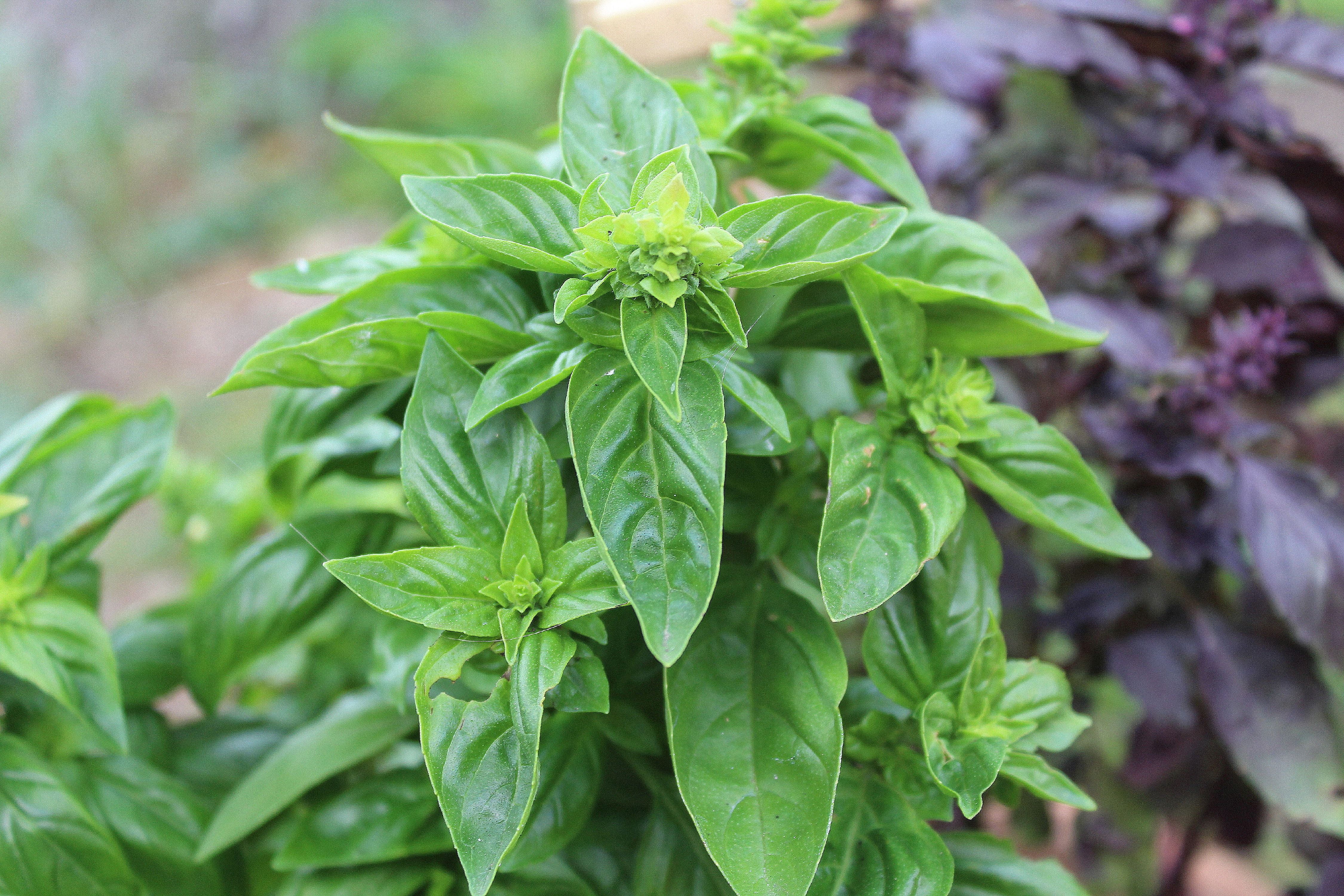
Basil
Ocimum basilicum
Basic Information
🌿 Family: Lamiaceae🗺️ Zone: 9-11
Other Names:
- Sweet Basil
- Culinary Basil
- Thai Basil (Ocimum basilicum var. thyrsiflora)
🌡️ Ideal Temperature : 50°F – 85°F
🔥 Heat Tolerance: Up to 100°F
❄️ Cold Tolerance: Down to 32°F
🌱 Type: Annual
Layers
- Herbaceous
Description
Basil (Ocimum basilicum) is a fast-growing, aromatic herb widely used for culinary and medicinal purposes. It has bright green, oval leaves with a strong, slightly sweet aroma. The plant grows between 30–90 cm (12–36 inches) tall and produces small white or purple flowers that attract pollinators.
Basil thrives in warm, sunny conditions with well-drained soil and requires regular pruning to promote bushy growth. It is highly valued for its ability to repel certain pests while attracting beneficial insects. Basil is commonly grown in herb gardens, companion planted with vegetables, or grown in containers.
🌞💧 Sun and Water Requirements:
- Prefers full sun but tolerates partial shade.
- Requires well-drained, moist, fertile soil.
- Needs regular watering; soil should be kept evenly moist but not waterlogged.
✂️🫘 Methods to Propagate:
- Seeds: Sow indoors 4–6 weeks before the last frost or direct sow after the danger of frost has passed.
- Cuttings: Can be propagated from stem cuttings placed in water or moist soil.
- Succession Planting: Recommended every few weeks for a continuous harvest.
🧑🌾👩🌾 When to Harvest:
- Leaves can be harvested once the plant reaches 15 cm (6 inches) in height.
- Regular pruning encourages bushy growth and prevents early flowering.
- Flowers should be pinched off to prolong leaf production unless grown for pollinators.
Purpose
Basil serves multiple functions in a permaculture system:
- Edible: Leaves are used fresh, dried, or in oils, teas, and culinary dishes.
- Medicinal: Traditionally used for digestion, anti-inflammatory, and antimicrobial properties.
- Pollinator: Flowers attract bees, butterflies, and other beneficial insects.
- Wildlife Attractor: Supports pollinators while deterring certain pests.
- Border Plant: Commonly used to define garden edges and mixed planting beds.
- Pest Management: Repels mosquitoes, aphids, and whiteflies while attracting predatory insects.